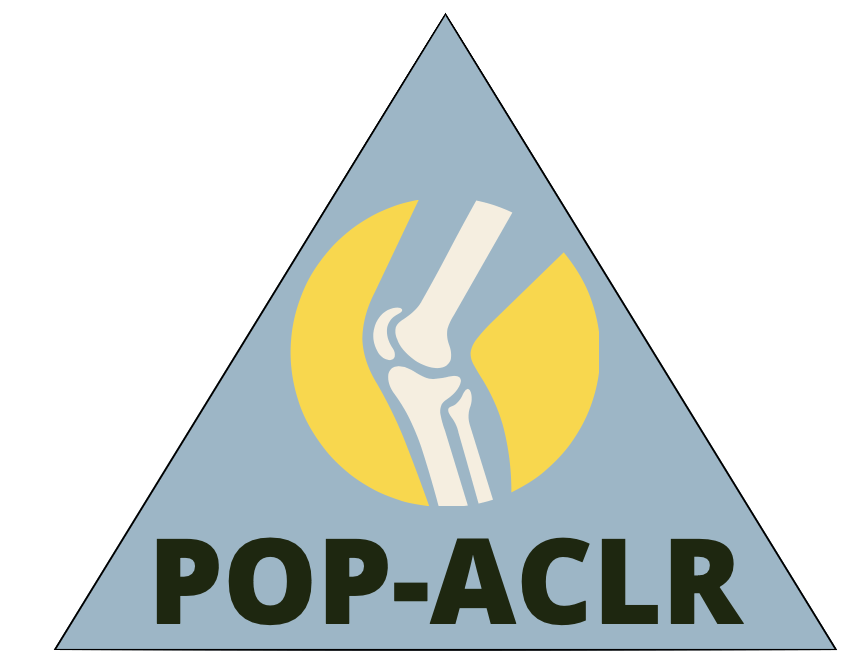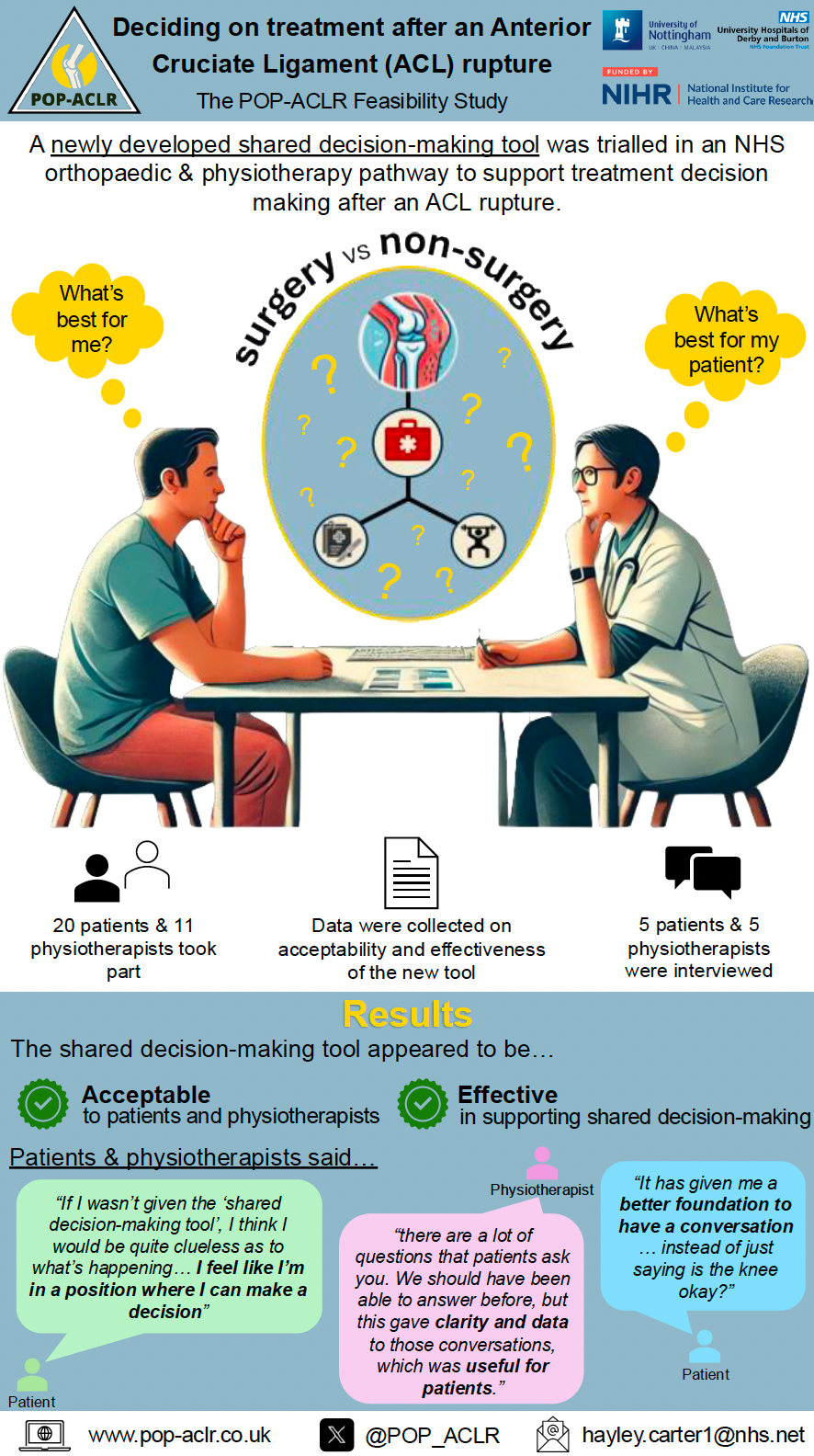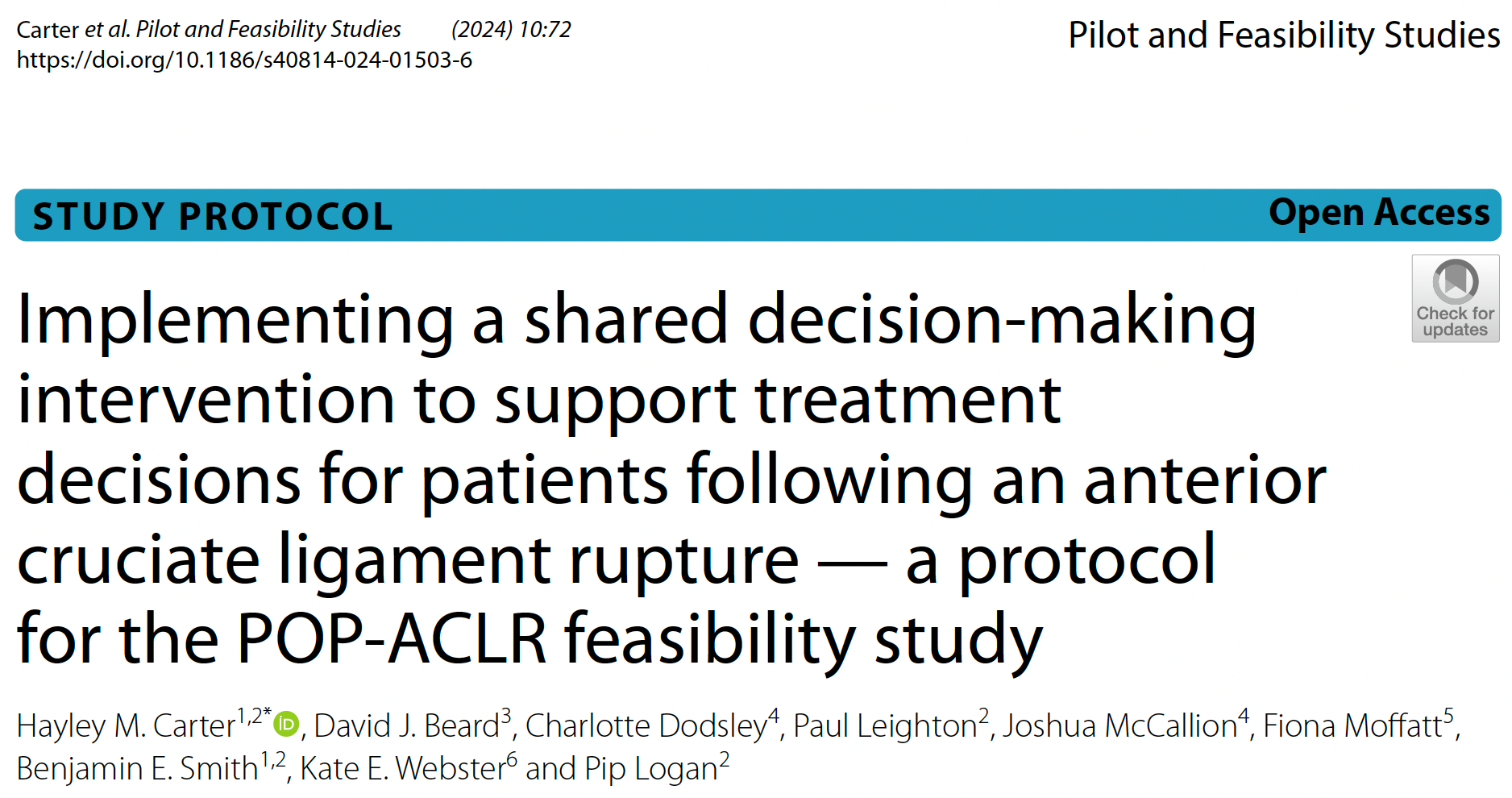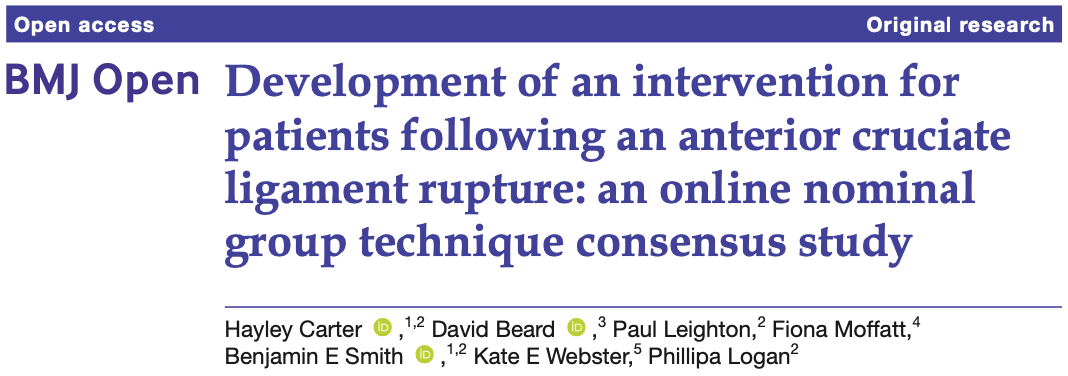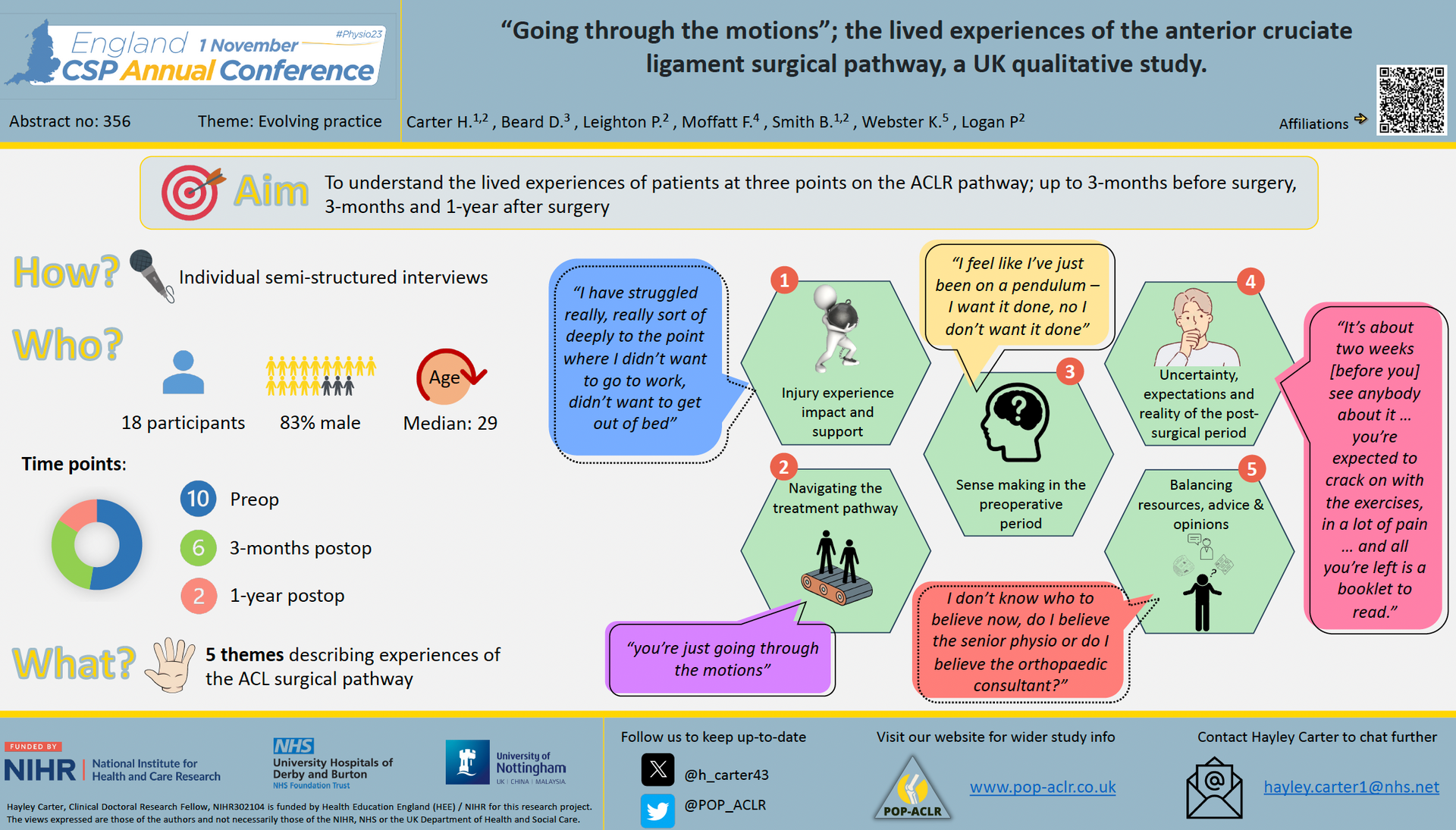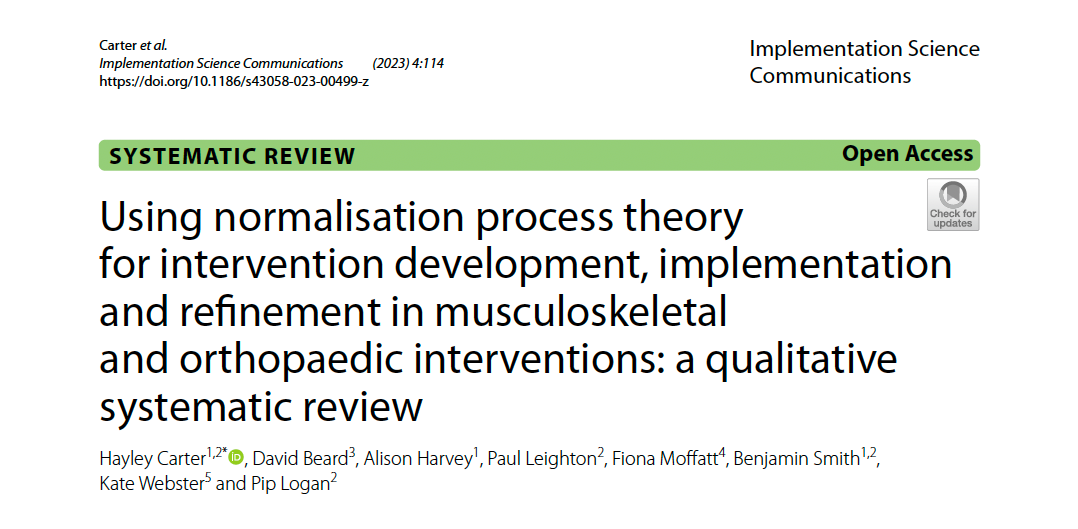Study Outputs
Keep up-to-date with the latest POP-ACLR outputs including paper publications and conference presentations.
Phase 3 Results
The final phase of POP-ACLR has drawn to a close and we have begun sharing the results with patients and healthcare professions at local events, national and international conferences.
Overall, the study concluded that the:
- shared decision-making intervention developed in Phase 2, was feasible to deliver
- study was feasible to run
- intervention was acceptable to both patients and clinicians.
Indicators of the interventions effectiveness were also explored in addition to implementation factors.
The image to the left was developed with patient representatives to provide an overview of the study results. We also wrote a 1-page results summary which you can read by selecting the button below.
Publication
The protocol for the final phase of the study, co-written with our patient partners, was published in May 2024.
Phase 3 is looking to explore the acceptability and usability of the shared decision-making intervention developed in Phase 2.
Access the free paper to find out our study plan by selecting the button to the left. You can also view the trial registration at https://www.isrctn.com/ISRCTN17801081
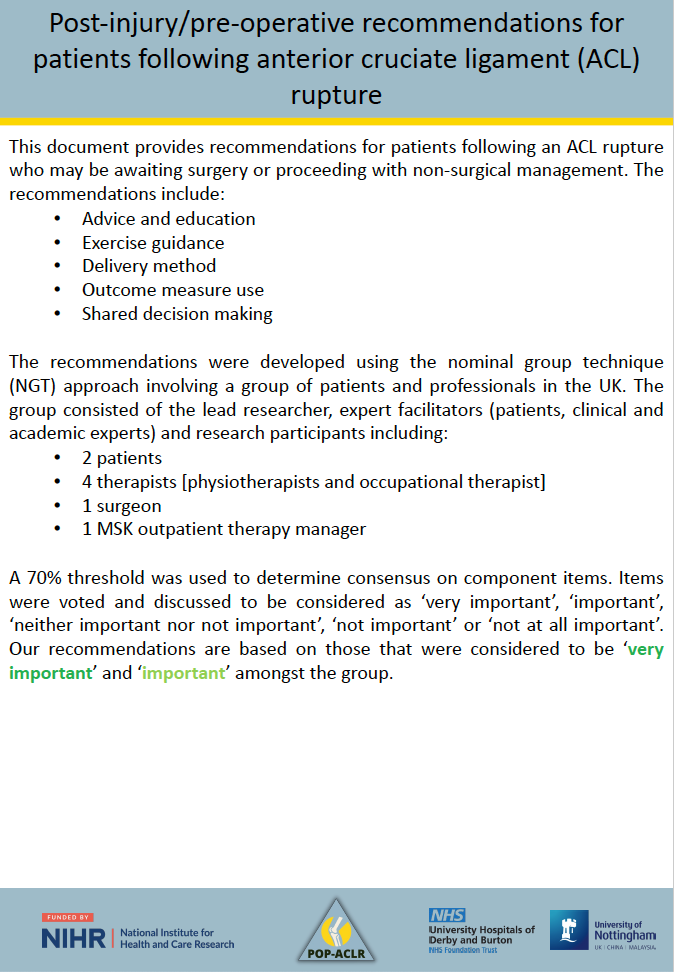
Clinical Recommendations
The clinical recommendation developed in Phase 2 can be access via the button below.
The recommendations include:
- Advice and education
- Exercise guidance
- Delivery methods for treatment
- Outcome measure use
- Shared decision-making
The document provides 'very important' and 'important' components for treatment in addition to a summary for each section at the end.
Shared Decision-Making Intervention
The shared decision-making intervention developed in phase comprises of two components:
- Patient information leaflet
- Option grid
Together these form the shared decision-making intervention which is being tested in Phase 3.
The patient information leaflet offers an overview of anatomy, treatment options, expectations and key considerations following ACL rupture. The option grid presents 11 frequently asked questions with a short response to directly compare surgical and non-surgical treatment.
You can access the intervention by following the red button below, both have been combined in 1 pdf document.
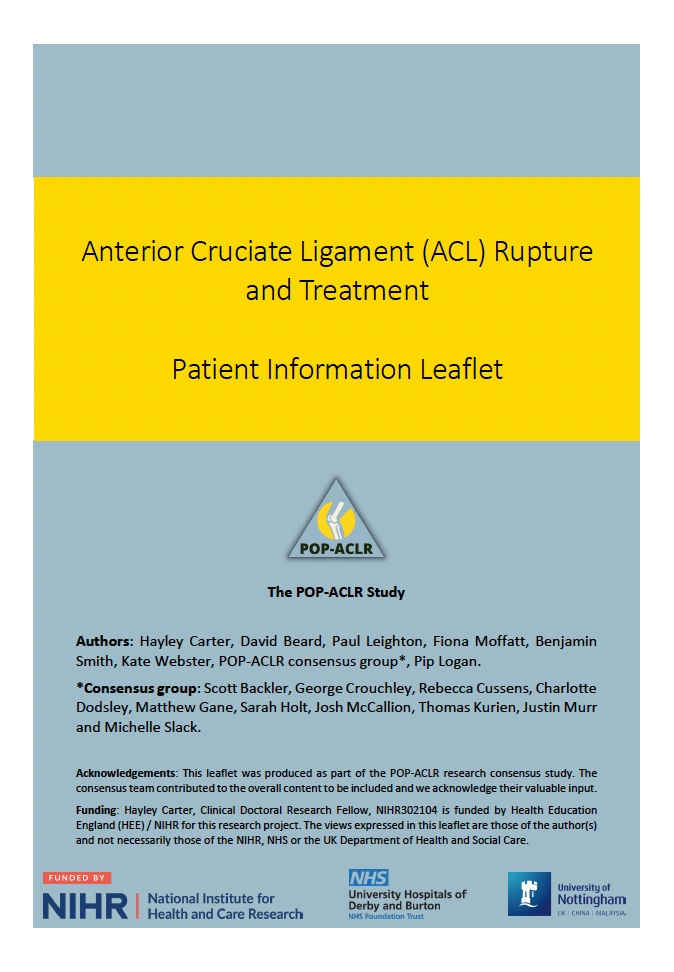
Publication
The paper reporting the results of our intervention development process (Phase 2) was published in July 2024.
Key outputs reported in the paper include:
- Shared decision-making intervention to support treatment decision making after ACL rupture
- Evidence-based recommendations for the treatment of patients post-ACL injury and/or pre-ACL surgery
Access the free paper for further information by selecting the red button to the left. You can access our shared decision-making intervention and clinical practice recommendations via the same button.
Phase 2 Results
We have presented the results from phase 2 of the study at various conferences in September and October 2024.
We have also shared our results at research study meetings and via a newsletter (find our newsletters here).
Click the red button below to view the poster we presented at a conference in September 2024.
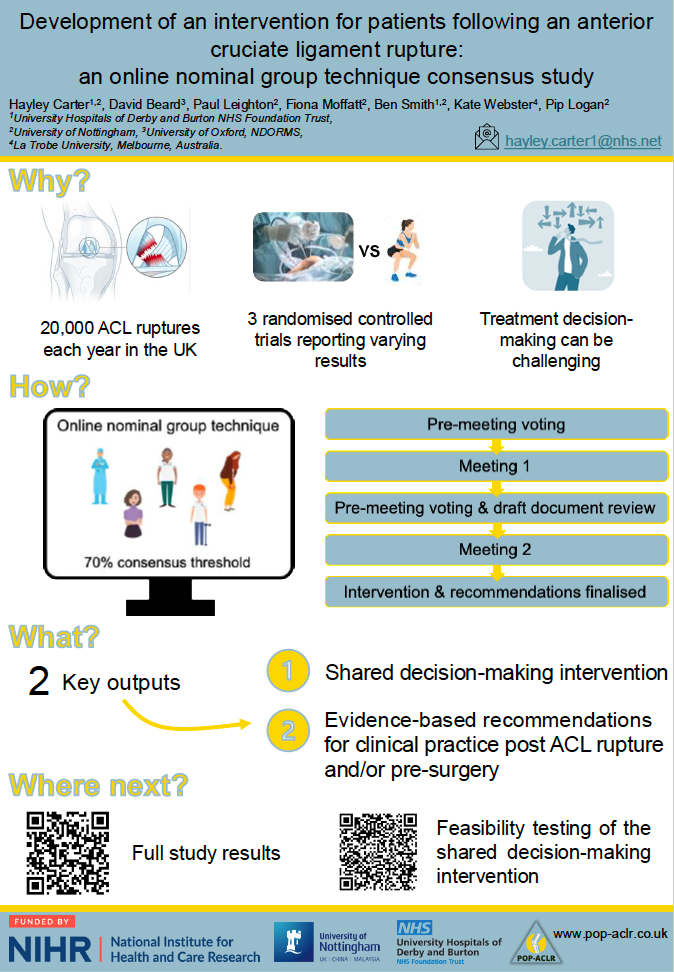
Publication
The paper reporting the results of our patient interview study (Phase 1) was published in September 2024.
This paper draws together 18 interviews with patients at three time-points on the ACL surgical pathway:
- up to 3-months before surgery
- 3-months after surgery
- 12-months after surgery
The results contributed to phase 2 to help us understand key needs of patients who have sustained an ACL rupture.
Phase 1 Results
We have presented the results from phase 1 of the study at various conferences in September, October and November 2023.
We have also shared our results at research study meetings and via a newsletter (read our newsletter here).
Click the red button to the right to view the poster we presented at the physiotherapy conference in November 2023.
Publication
As part of the study, we're using a theory (normalisation process theory) to help us design, integrate and evaluate the treatment package we develop.
We undertook a review of the theory which was published in September 2023.
